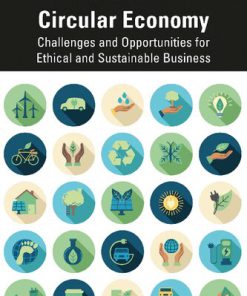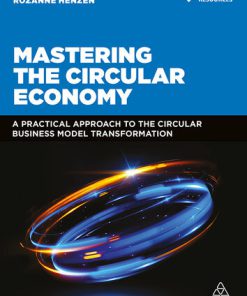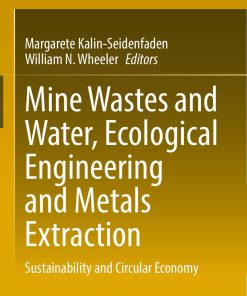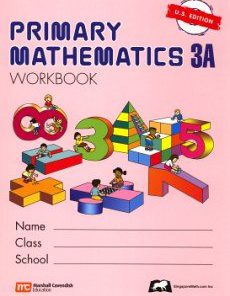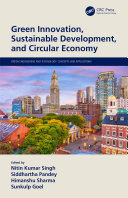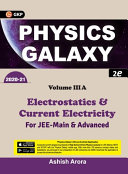Circular Economy and Sustainability Volume 1 Management and Policy 1st Edition by Alexandros Stefanakis, Ioannis Nikolaou 0128198176 9780128198179
$50.00 Original price was: $50.00.$25.00Current price is: $25.00.
Circular Economy and Sustainability Volume 1 Management and Policy 1st Edition by Alexandros Stefanakis, Ioannis Nikolaou – Ebook PDF Instant Download/Delivery: 0128198176, 9780128198179
Full download Circular Economy and Sustainability Volume 1 Management and Policy 1st Edition after payment
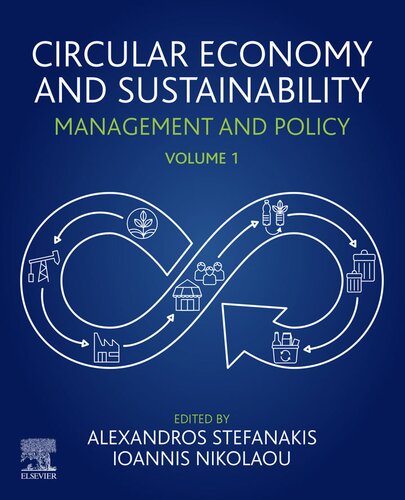
Product details:
ISBN 10: 0128198176
ISBN 13: 9780128198179
Author: Alexandros Stefanakis, Ioannis Nikolaou
The concept of circular economy is based on strategies, practices, policies, and technologies to achieve principles related to reusing, recycling, redesigning, repurposing, remanufacturing, refurbishing, and recovering water, waste materials, and nutrients to preserve natural resources. It provides the necessary conditions to encourage economic and social actors to adopt strategies toward sustainability. However, the increasing complexity of sustainability aspects means that traditional engineering and management/economics alone cannot face the new challenges and reach the appropriate solutions.
Thus, this book highlights the role of engineering and management in building a sustainable society by developing a circular economy that establishes and protects strong social and cultural structures based on cross-disciplinary knowledge and diverse skills. It includes theoretical justification, research studies, and case studies to provide researchers, practitioners, professionals, and policymakers the appropriate context to work together in promoting sustainability and circular economy thinking.
Circular Economy and Sustainability Volume 1 Management and Policy 1st Table of contents:
Chapter 1: A review of circular economy literature through a threefold level framework and engineering-management approach
Abstract
1: Introduction
2: Theoretical background
3: Methodology
4: Results
5: Conclusion and discussion
Chapter 2: Steering the circular economy: A new role for Adam Smith’s invisible hand
Abstract
Acknowledgment
1: Introduction
2: Weak and strong sustainability
3: Systems theory
4: The tripartite invisible embrace
5: The Ogiek people and the honey economy
6: Conclusions
Chapter 3: A systems thinking perspective for the circular economy
Abstract
1: Introduction
2: Structure as a driver of behavior
3: System characteristics
4: Leverage points
5: Conclusion
Chapter 4: Conceptualizing the circular bioeconomy
Abstract
1: Introduction
2: Circular bioeconomies
3: Benefits of a circular bioeconomy
4: Barriers to the circular bioeconomy
5: Ways forward
Chapter 5: Circular economy and financial performances of European SMEs
Abstract
1: Introduction
2: Literature review
3: Methodology
4: Results and discussions
5: Conclusions
A: Appendix 1
B: Appendix 2
Chapter 6: History and evolution of the circular economy and circular economy business models
Abstract
1: Introduction
2: Methodology
3: Circular economy: History, evolution, and definition
4: Circular business model (CBM)
5: Future research agenda/conclusion
Chapter 7: A triple-level framework to evaluate the level of involvement of firms in the circular economy (CE)
Abstract
1: Introduction
2: Theoretical background
3: Research methodological framework
4: Questionnaire survey
5: Conclusion and discussion
A: Appendix 1
Chapter 8: Exploring resource-service systems—Beyond product-service systems and toward configurations of circular strategies, business models, and actors
Abstract
1: Introduction
2: The resource-service system literature and its limitations
3: Research design
4: Results—Analysis of Riversimple—A car-as-a-service company
5: Discussion and conclusion—Resource-service systems
Chapter 9: Complementing circular economy with life cycle assessment: Deeper understanding of economic, social, and environmental sustainability
Abstract
1: Introduction
2: LCA: A holistic approach
3: LCA in CE
4: CE and LCA: Case studies
5: Summary
Chapter 10: Life cycle costing as a way to include economic sustainability in the circular economy. New perspectives from resource-intensive industries
Abstract
1: Introduction
2: Literature review
3: Methodological framework
4: The aggregate LCC calculation model
5: Interpretation and discussion of the results
6: Conclusions
Chapter 11: Circular economy during project life cycle
Abstract
1: Introduction
2: Methodology
3: CE in construction/built environment
4: Conclusions and discussion
Chapter 12: The role of ecodesign in the circular economy
Abstract
1: Introduction
2: Ecodesign
3: Ecodesign tools
4: The role of the designer in the value chain
5: Conclusion
Chapter 13: Sustainable finance and circular economy
Abstract
1: Introduction
2: Sustainable finance and circular economy policies
3: The environmental, social, and governance (ESG) risk and the circular risk
4: Sustainable finance and circular economy for a sustainable capital market
5: Results and discussion
6: Conclusion
Chapter 14: How to advance sustainable and circular economy-oriented public procurement—A review of the operational environment and a case study from the Kymenlaakso region in Finland
Abstract
Acknowledgments
1: Introduction
2: Aims of the study
3: Material and methods
4: Results
5: Discussion
6: Conclusions
Chapter 15: A framework to integrate circular economy principles into public procurement
Abstract
1: Introduction
2: Theoretical underpinnings
3: Methodology
4: Computational examples and results
5: Conclusion and discussion
Chapter 16: The role of public policy in the promotion of sustainability by means of corporate social responsibility: The case of the chemicals sector worldwide
Abstract
1: Introduction
2: Literature review
3: Methodology
4: Econometric estimations
5: Conclusions and policy recommendations
Chapter 17: Awareness-led social lab on circular economy in Switzerland: Exploring serendipity
Abstract
Acknowledgments (Financial support)
1: Introduction
2: Beyond Waste: Circular Resources Lab 2018
3: The serendipitous learnings from the experience of our cohosting team
4: Selection of the serendipitous insights from the lab cohort members
5: Discussion
Chapter 18: How circular design at signify brings economic, environmental, and social value
Abstract
1: Introduction
2: Sustainable design for brighter lives and a better world
3: Sustainable innovation at the front-end
4: Circular lighting solutions to address global challenges
5: Conclusions
Chapter 19: Circular economy and urbanism: A sustainable approach to the growth of cities
Abstract
1: The city as a 21st century sustainability challenge
2: Structure and methodology
3: The sustainable urban growth approach
4: Circular economy as an influential concept and useful system
5: Defining a new paradigm for sustainable urban planning
6: Spherical city: A framework for urban circular economy
7: Conclusions
Chapter 20: Overview: The smart sustainable city initiatives and the circular economy
Abstract
1: Introduction
2: Smart city and smart sustainable city
3: Circular economy
4: Use case of technology in a smart sustainable city
5: Concluding remarks
Chapter in Edited Book
Journal Publication
Reference to a Website
Report
Chapter 21: Transitioning into circular food consumption practices: An analytical framework
Abstract
1: Introduction
2: The CFCP framework
3: Discussion
4: Conclusions
Chapter 22: From linear economy legacies to circular economy resources: Maximising the multifaceted values of legacy mineral wastes
Abstract
1: Introduction
2: Methods
3: Review and discussion
4: Conclusions—A way forward
Chapter 23: “Closing two loops”—The importance of energy recovery in the “closing the loop” approach
Abstract
1: Introduction
2: Methodology
3: Results and discussion
4: Conclusion
Chapter 24: Investigation of the sustainable waste transportation in urban and rural municipalities—Key environmental parameters of the collection vehicles use
Abstract
1: Introduction and literature review
2: Waste categories and waste treatment in the European Union
3: The main indicators of solid waste stream in Poland
4: Schedules and types of waste collection in municipalities
5: Waste collections in urban and rural municipalities in Poland
6: Supporting waste collections by artificial intelligence algorithms—A case study for municipalities in the Silesian region of Poland
7: Discussion and conclusions
Chapter 25: New age zero waste sustainable apparel industry: Design practices, innovative approaches, and technological intervention
Abstract
1: Introduction
2: Features and ecological challenges in the apparel industry
3: Sustainable apparel design, production, and consumption
4: Ethical and consumption-based concerns of sustainable apparel
5: Zero waste design practices in apparel design
Chapter 26: A conceptual and empirical study into the process and emerging patterns enabling the transition to a circular economy: Evidence from the Dutch dairy sector
Abstract
Acknowledgments
1: Introduction: Circular economy from a transitional perspective
2: Understanding transitional processes by applying a multiphase approach
3: Circular economy of Dutch dairy in a transitional perspective
4: Conclusions and discussion
Chapter 27: The contemporary research on circular economy in industry
Abstract
1: Introduction
2: Methodological procedures
3: Results and discussion
4: General considerations
Chapter 28: The role of collaborative leadership in the circular economy
Abstract
1: Introduction
2: Theoretical framing of the challenges of circular economy
3: The importance of leadership in circular economy
4: The key factor to success in circular economy: Collaborative leadership
5: Discussion
6: Conclusion
Chapter 29: Issues, interventions, and innovations in the cement industry: A comparative trajectory analysis of eco-cement transitions in the Netherlands, China, and Japan
Abstract
Acknowledgment
1: Introduction
2: Materials and methods
3: Analysis and discussions
4: Concluding remarks and future research directions
Chapter 30: The potential for a circular economy in the nonroad mobile machinery industry—The case of Linde Material Handling GmbH
Abstract
1: Introduction
2: Methodology
3: Results
4: Discussion and recommendations
5: Conclusion
Journal publication
Book
Chapter 31: VALUABLE—Transition of automotive supply chain to the circular economy
Abstract
1: Introduction
2: A cleaner future—A waste and resource challenge
3: Why a circular economy?
4: Barriers—What is in the way?
5: Enablers—Clear the way
6: A circular vision for the UK battery value chain
Chapter 32: Circular economy in the cosmetics industry: An assessment of sustainability reporting
Abstract
1: Introduction
2: Circular economy and sustainable development
3: Survey methodology
4: Companies
5: Conclusion
Chapter 33: Company perspectives on sustainable circular economy development in the South Karelia and Kymenlaakso regions and in the publishing sector in Finland
Abstract
Acknowledgments
1: Introduction and background
2: Material and methods
3: Results
4: Discussion
5: Conclusions
Chapter 34: Approaches to the circular economy in Armenia and Portugal: An overview
Abstract
1: Introduction
2: Methodology
3: Regional context for Armenia and Portugal
4: Thematic areas of research
5: An overview of circular economy efforts in Armenia
6: An overview of circular economy efforts in Portugal
7: A brief discussion: Observations from Portugal’s unique permacircular system
8: A brief discussion: Observations from Armenia’s community-government interactions
9: Insights
10: Conclusions
People also search for Circular Economy and Sustainability Volume 1 Management and Policy 1st:
circular sustainability definition
5 dimensions of sustainability
circular economy and sustainability of the clothing and textile industry
what is circular economy in simple words
Tags:
Alexandros Stefanakis,Ioannis Nikolaou,Circular
You may also like…
Business & Economics - Responsibility and Business Ethics
Business & Economics - Economics
Engineering
Circular Economy Assessment and Case Studies 1st Edition Subramanian Senthilkannan Muthu
Uncategorized
Sraffa and Leontief Revisited Mathematical Methods and Models of a Circular Economy Hassan A
Business & Economics - Mathematical Economics
Mastering the Circular Economy 1st Edition by Ed Weenk, Rozanne Henzen ISBN 9781398602755 1398602752
Earth Sciences - Mining
Uncategorized
Engineering - Environmental
Green Innovation Sustainable Development and Circular Economy 1st Edition Nitin Kumar Singh



